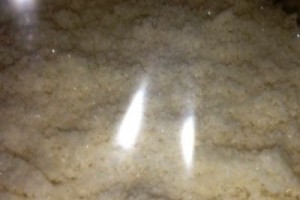The Evolution of Designer Drugs: A Journey Through the Decades
Table of Contents
- 1920s–1930s: The Genesis of Designer Drugs
- 1960s–1970s: The Era of Synthetic Hallucinogens
- 1980s–Early 1990s: The Emergence of the Term "Designer Drug"
1920s–1930s: The Genesis of Designer Drugs
The 1920s marked the enactment of the second International Opium Convention in 1925, a pivotal moment in drug control history. This convention explicitly banned morphine and its diacetyl ester, heroin. Consequently, alternative morphine esters, such as dibenzoylmorphine and acetylpropionylmorphine, began to surface in the market. These substances delivered effects similar to heroin but managed to evade the Opium Convention's restrictions.
In response to this growing concern, the Health Committee of the League of Nations introduced several resolutions. In 1930, these resolutions culminated in a landmark decision to extend legal control to all esters of morphine, oxycodone, and hydromorphone. This marked the first step towards controlling designer drugs and curbing their proliferation.
The Prohibition era of the 1930s also witnessed the rise of designer drugs, albeit in a different context. Diethyl ether was sold and consumed as an alternative to illegal alcoholic beverages in several countries. This period set the stage for the continual evolution of designer drugs over the years.
1960s–1970s: The Era of Synthetic Hallucinogens
The 1960s and 1970s brought about the emergence of new synthetic hallucinogens. Notable among them was the sale of highly potent DOM (short for 2,5-dimethoxy-4-methylamphetamine) tablets in San Francisco in 1967. The regulatory landscape at the time did not provide sufficient scope for prosecuting individuals involved with drug analogues. Instead, new compounds were gradually added to controlled drug schedules as they posed growing concerns.
A significant legal case occurred in 1973 when Tim Scully and Nicholas Sand were prosecuted for producing ALD-52, the acetyl amide of LSD. Though ALD-52 was not a controlled substance, they were convicted based on their possession of LSD, which was illegal. The late 1970s also witnessed the introduction of various analogues of phencyclidine (PCP) to the illicit market, further highlighting the evolving nature of designer drugs.
1980s–Early 1990s: The Emergence of the Term "Designer Drug"
The 1980s marked the birth of the term "designer drug." It primarily referred to synthetic opioid drugs, many of which were based on the fentanyl molecule. MDMA, commonly known as ecstasy, experienced a surge in popularity during the mid-1980s, contributing to the term's widespread usage.
During this period, narcotics often masqueraded as heroin on the black market. Many of these substances were fentanyl or meperidine-based. Some, like MPPP, were found to contain a harmful impurity called MPTP, leading to severe brain damage reminiscent of late-stage Parkinson's disease. The market also saw potent fentanyl analogues, which resulted in accidental overdoses.
To combat the proliferation of designer drugs, laws were enacted to grant the DEA (Drug Enforcement Administration) the power to emergency schedule chemicals for a year, with a possible 6-month extension. This allowed authorities to gather evidence for permanent scheduling. MDMA became the first drug to be emergency-scheduled, ultimately classified as a Schedule I substance despite suggestions for a lower classification based on medical uses.
The late 1980s and early 1990s witnessed a resurgence of methamphetamine in the United States, prompting increased regulation of precursor chemicals. While alternative stimulant drugs like methcathinone and 4-methylaminorex emerged, methamphetamine continued to dominate the illicit synthetic stimulant market.

